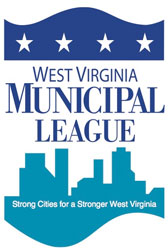 The West Virginia Municipal League is a statewide, nonprofit, nonpartisan association of cities, towns and villages established in 1968 to assist local governments and advance the interests of the citizens who reside within. The League achieves this directive through legislative advocacy, research, education and other services for municipal elected officials. The membership includes all 230 municipalities' population in the state.
The West Virginia Municipal League is a statewide, nonprofit, nonpartisan association of cities, towns and villages established in 1968 to assist local governments and advance the interests of the citizens who reside within. The League achieves this directive through legislative advocacy, research, education and other services for municipal elected officials. The membership includes all 230 municipalities' population in the state.
The central purpose of the League is to advance the interests and welfare of the people residing in the municipalities of our state. By cooperating through the League, cities benefit from research programs and a united legislative voice that would be impossible to maintain individually.
Since the early '30's, municipal officials have received assistance from the West Virginia Municipal league in dealing with local government affairs. Incorporated in 1968, the League is a non-profit, voluntary association of municipal governments. Its service program has you in mind. Whether you are serving your community in an elected or appointed capacity - we make your job easier. Your League staff is always available to answer questions on all aspects of local government.
City Facts
- The first brick pavement in the United States was laid in Charleston in 1870.
- A total of 42 West Virginia cities are older than the state itself, incorporated in 1863.
- The first concrete street in the world was laid in the town of Webster Springs (Addison) in 1903.
- St. Andrews Methodist Church in Grafton was the site of the first Mother's Day celebration in 1908.
- Weirton is the only city in the United States that extends from one state border to another.
- Access to health care is key for a high quality of life. Of the 64 licensed, critical access, rehabilitation and psychiatric hospitals across the state of West Virginia, 63 are housed inside cities.
- West Virginia city residents' cost of living percentages are well below the national average. For example, in Morgantown, property taxes are 43% below the micropolitan median and 72% below the national average while a house in the city is 20% below the national average.

